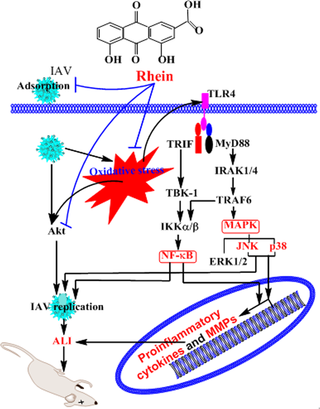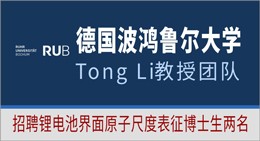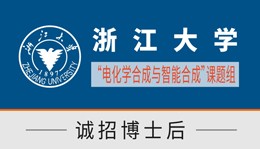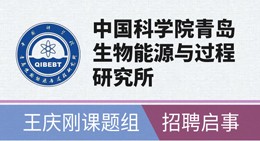PLOS ONE ( IF 2.9 ) Pub Date : 2018-01-31 , DOI: 10.1371/journal.pone.0191793
Qian-Wen Wang , Yun Su , Jiang-Tao Sheng , Li-Ming Gu , Ying Zhao , Xiao-Xuan Chen , Cheng Chen , Wei-Zhong Li , Kang-Sheng Li , Jian-Ping Dai

|
Rhein, an anthraquinone compound existing in many traditional herbal medicines, has anti-inflammatory, antioxidant, antitumor, antiviral, hepatoprotective, and nephroprotective activities, but its anti-influenza A virus (IAV) activity is ambiguous. In the present study, through plaque inhibition assay, time-of-addition assay, antioxidant assay, qRT-PCR, ELISA, and western blotting assays, we investigated the anti-IAV effect and mechanism of action of rhein in vitro and in vivo. The results showed that rhein could significantly inhibit IAV adsorption and replication, decrease IAV-induced oxidative stress, activations of TLR4, Akt, p38, JNK MAPK, and NF-κB pathways, and production of inflammatory cytokines and matrix metalloproteinases in vitro. Oxidant H2O2 and agonists of TLR4, Akt, p38/JNK and IKK/NF-κB could significantly antagonize the inhibitory effects of rhein on IAV-induced cytopathic effect (CPE) and IAV replication. Through an in vivo test in mice, we also found that rhein could significantly improve the survival rate, lung index, pulmonary cytokines, and pulmonary histopathological changes. Rhein also significantly decreased pulmonary viral load at a high dose. In conclusion, rhein can inhibit IAV adsorption and replication, and the mechanism of action to inhibit IAV replication may be due to its ability to suppress IAV-induced oxidative stress and activations of TLR4, Akt, p38, JNK MAPK, and NF-κB signal pathways.
中文翻译:

大黄酸通过调节氧化应激,TLR4,Akt,MAPK和NF-κB信号通路的抗甲型流感病毒活性
大黄是一种在许多传统草药中存在的蒽醌化合物,具有抗炎,抗氧化,抗肿瘤,抗病毒,保肝和保护肾的活性,但其抗甲型流感病毒(IAV)的活性却模棱两可。在本研究中,我们通过斑块抑制测定,添加时间测定,抗氧化剂测定,qRT-PCR,ELISA和Western blotting测定,我们研究了大黄酸在体外和体内的抗IAV作用和作用机理。结果表明,大黄酸可以显着抑制IAV的吸附和复制,降低IAV诱导的氧化应激,TLR4,Akt,p38,JNK MAPK和NF-κB途径的活化以及炎性细胞因子和基质金属蛋白酶的产生。氧化剂H2 O 2和TLR4,Akt,p38 / JNK和IKK /NF-κB的激动剂可以显着拮抗大黄酸对IAV诱导的细胞病变效应(CPE)和IAV复制的抑制作用。通过对小鼠的体内测试,我们还发现大黄酸可以显着提高存活率,肺指数,肺细胞因子和肺组织病理学变化。大黄酸在高剂量时也能显着降低肺部病毒载量。总之,大黄酸可以抑制IAV的吸附和复制,而抑制IAV复制的作用机制可能是由于它具有抑制IAV诱导的氧化应激和激活TLR4,Akt,p38,JNK MAPK和NF-κB信号的能力。途径。

































 京公网安备 11010802027423号
京公网安备 11010802027423号